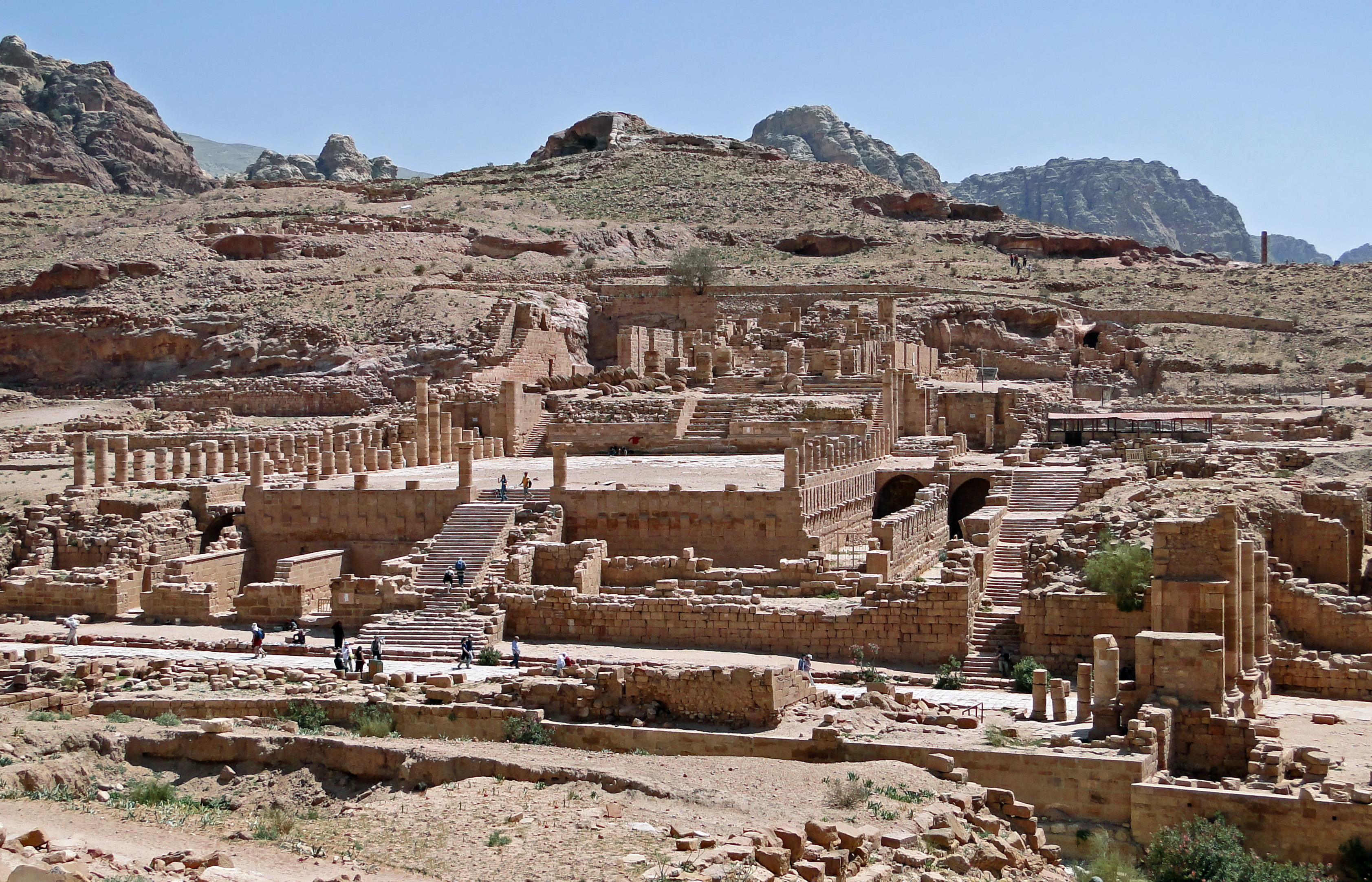|
Nabataean Art
Nabataean art is the art of the Nabataeans of North Arabia. They are known for finely-potted painted ceramics, which became dispersed among Greco-Roman world, as well as contributions to sculpture and Nabataean architecture. Nabataean art is most well known for the archaeological sites in Petra, specifically monuments such as Al Khazneh and Ad Deir. Ceramics Nabataean pottery is characterised by its thin walls and floral motifs. The exclusive use of floral patterns links back to Nabataean aniconism in their religious practices. The designs on the wares are generally painted on or pressed into the surface with stamps and rouletting wheels. To put a finish on the pieces, the makers burnished them or used a sintering process. Most of the wares are pinkish in color, much like the cliffs surrounding the city. This is because Nabataean potters used local clay bodies in their work. Nabataean wares take many forms, and can be classified by their thickness, rim shape, bases, and deco ... [...More Info...] [...Related Items...] OR: [Wikipedia] [Google] [Baidu] |
Nabataeans
The Nabataeans or Nabateans (; Nabataean Aramaic: , , vocalized as ; Arabic language, Arabic: , , singular , ; compare grc, Ναβαταῖος, translit=Nabataîos; la, Nabataeus) were an ancient Arab people who inhabited northern Arabian Peninsula, Arabia and the southern Levant. Their settlements—most prominently the assumed capital city of Petra, Raqmu (present-day Petra, Jordan)—gave the name ''Nabatene'' ( grc, Ναβατηνή, translit=Nabatēnḗ) to the Arabian borderland that stretched from the Euphrates to the Red Sea. The Nabateans emerged as a distinct civilization and political entity between the 4th and 2nd centuries BCE,Taylor, Jane (2001). ''Petra and the Lost Kingdom of the Nabataeans''. London: I.B.Tauris. pp. 14, 17, 30, 31. . Retrieved 8 July 2016. with Nabataean Kingdom, their kingdom centered around a loosely controlled trading network that brought considerable wealth and influence across the ancient world. Described as fiercely independent by cont ... [...More Info...] [...Related Items...] OR: [Wikipedia] [Google] [Baidu] |
Great Temple (Petra)
The Great Temple at Petra is a grand monumental complex that lies south of the Colonnaded Street at Petra. It covers an area of ~7,560 m2. The complex was probably completed in the early first century CE, under the rule of Nabataean king Aretas IV, as suggested by architectural and sculptural details. The "Great Temple" occupied a prime spot in ancient Petra: from its ruins one can now see the Siq to the Southeast, the Qasr al-Bint to the West, and the Lower Market/Petra Pool Complex to the East. It is unclear whether the complex was a religious or administrative building, and – if it was indeed religious – how exactly it functioned or to what deity it was dedicated. History of research In the 1890s, the ruins were superficially explored by German archaeologists R. E. Brünnow and A. von Domaszewski. Walter Bachmann then surveyed Petra as a member of the Preservation branch of the German-Turkish army, and was the first scholar to identify the monument by its current ... [...More Info...] [...Related Items...] OR: [Wikipedia] [Google] [Baidu] |
Baetylus
Baetylus (also Baetyl, Bethel, or Betyl, from Semitic ''bet el'' "house of god"; compare Bethel, Beit El) are sacred stones that were supposedly endowed with life, or gave access to a deity. According to ancient sources, at least some of these objects of worship were meteorites, which were dedicated to the gods or revered as symbols of the gods themselves. Other accounts suggest that contact with them could give access to epiphanic experiences of the deity. The baetyl has been described by Wendy Doniger as "the parent form for altars and iconic statuary". In general the baetyl was believed to have something inherent in its own nature that made it sacred, rather than becoming sacred by human intervention, such as carving it into a cult image. Some baetyls were left in their natural state, but others were worked on by sculptors. The exact definition of a baetyl, as opposed to other types of sacred stones, "cult stones" and so on, is rather vague both in ancient and modern sourc ... [...More Info...] [...Related Items...] OR: [Wikipedia] [Google] [Baidu] |
Basel 2012-08 Mattes 1 (215)
, french: link=no, Bâlois(e), it, Basilese , neighboring_municipalities= Allschwil (BL), Hégenheim (FR-68), Binningen (BL), Birsfelden (BL), Bottmingen (BL), Huningue (FR-68), Münchenstein (BL), Muttenz (BL), Reinach (BL), Riehen (BS), Saint-Louis (FR-68), Weil am Rhein (DE-BW) , twintowns = Shanghai, Miami Beach , website = www.bs.ch Basel ( , ), also known as Basle ( ),french: Bâle ; it, Basilea ; rm, label=Sutsilvan, Basileia; other rm, Basilea . is a city in northwestern Switzerland on the river Rhine. Basel is Switzerland's third-most-populous city (after Zürich and Geneva) with about 175,000 inhabitants. The official language of Basel is (the Swiss variety of Standard) German, but the main spoken language is the local Basel German dialect. Basel is commonly considered to be the cultural capital of Switzerland and the city is famous for its many museums, including the Kunstmuseum, which is the first collection of art accessible to the public ... [...More Info...] [...Related Items...] OR: [Wikipedia] [Google] [Baidu] |


.jpg)
